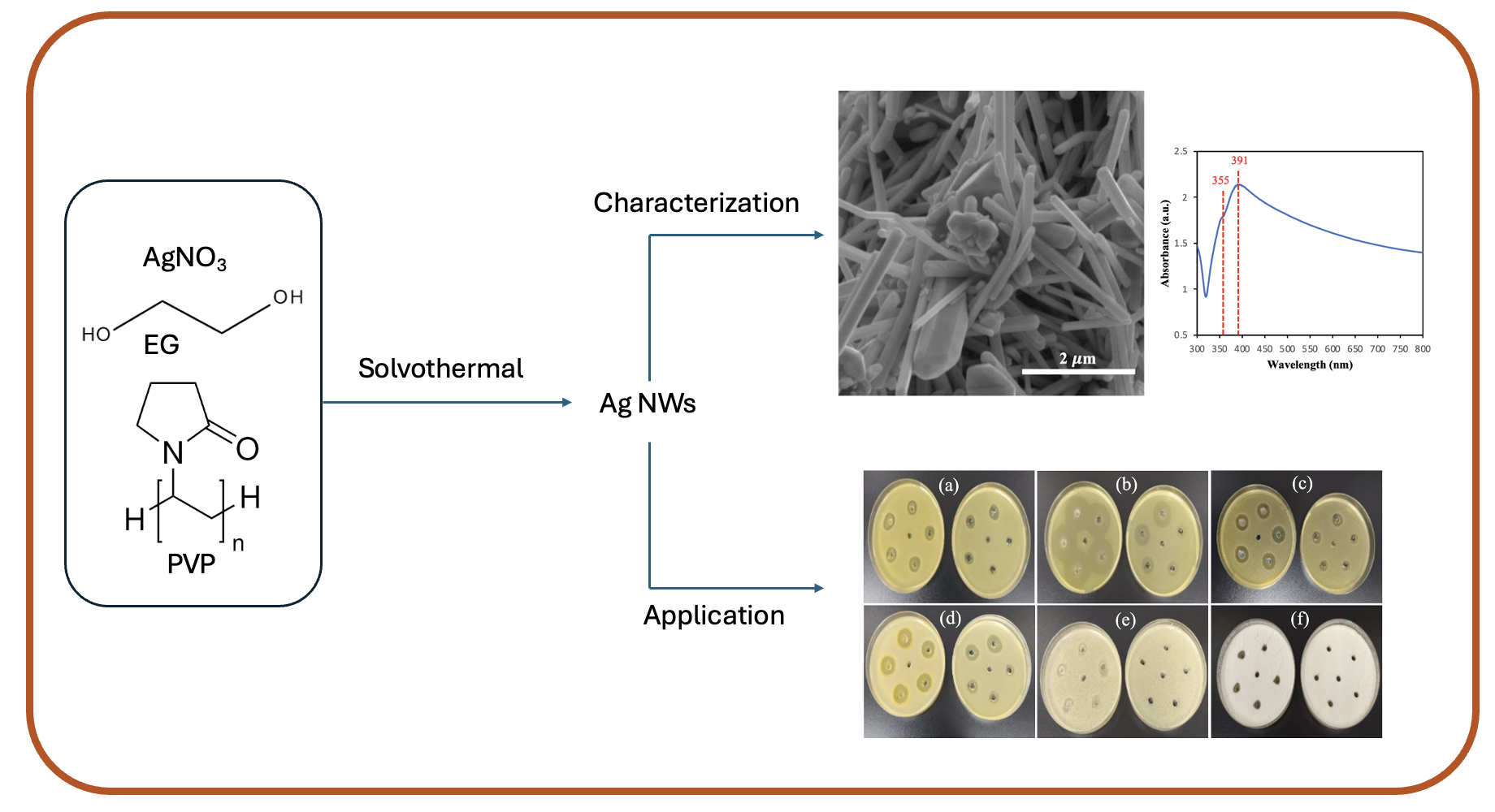Synthesis of Silver Nanowires Using Solvothermal Method and Its Application as Antimicrobial Agents
Abstract
Interesting studies on silver nanowires have been conducted in the disciplines of biotechnology and nanotechnology. They are very useful in antibacterial applications because of their conductive and antimicrobial qualities. When silver nanowires are synthesized using the right techniques, they can form nanoscale structures with more surface area, which improves their contact with bacteria and increases their antibacterial efficacy. The aim of this study was to create silver nanowires with ideal solvothermal characteristics and to evaluate the antimicrobial activity. By used ethylene glycol to reduce silver nitrate in polyvinylpyrrolidine at 160oC for 2.5 hours, silver nanowires were successfully produced. The products were examined using SEM, XRD, PSA, and UV-visible spectroscopy. The average size of silver nanowires was 123.0 nm and the highest inhibition zone was 2.33 cm. Overall, the synthesis and use of silver nanowires, with a focus on the solvothermal approach, holds great promise for treating bacterial infections and has a favorable influence on the environment and public health.






















